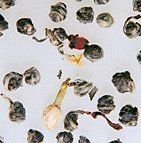Whether you accept it, avoid it or live somewhere in between, insurance coverage has become a defining issue for our profession. Patients increasingly expect to use their benefits, practitioners want to be compensated fairly for their time and expertise, and the system itself remains – at best – fragmented. The encouraging news is that coverage has expanded in meaningful ways. The challenging news is that reimbursement, across the board, remains inadequate.
Tea Brewing Tips
1. Making Hot Water
| Green, White & Jasmine Teas | Using fresh spring water, heat to approximately 175º (boiling water will damage the delicate nature of green tea). Use stainless steel, glass, ceramic pot or kettle. Do not use aluminum or iron. |
| Oolong & Red Teas | Bring water to a rolling boil. |

|

|
2. Warming the Tea Pot
Rinse out tea pot with hot water. Fill with hot water. Pour out after two minutes.

|
| Green, White, Red & Jasmine Teas |
|
| Oolong Teas | |
| Green Oolongs | Regular Style (using tea pot or gai wan)
Gong Fu Style (concentrated shots using tea pot or gai wan)
Practical Style (using any drink container)
|
| Red Oolongs | Red oolongs infuse faster than green oolongs. Thus, reduce infusion times by about 50%. |

|

|
Important note: Discard used tea leaves after 12 hours, as they will begin to spoil.



